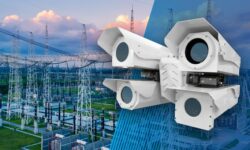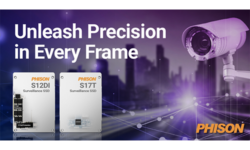It’s Time to Trust Video Surveillance Systems
As the video surveillance industry continues to boom, will we ever become comfortable with the trade-off between autonomy and security?

Adobe Stock image courtesy of borislav15
Editor’s Note: The views expressed by guest bloggers and contributors are those of the authors and do not necessarily represent the views of, and should not be attributed to, SSI or any other Emerald publication.
The tension between public safety and individual privacy is characterized by the constant push and pull between these two important human instincts. This tension is also at the crux of a well-worn debate over how much scrutiny is too much.
For as long as video cameras have been available to the mass market, their use for surveillance purposes has drawn strong opinions from legislators, law enforcement officials, businesses and citizens alike – and anything resembling agreement seems perpetually out of reach.
Yet the discussion is an important one. On the one hand, we should be protective of our freedom and privacy. On the other hand, we are social creatures who have successfully built thriving communities across the world. Even without shared regulations, these generally approved rules are enforced.
This tension begs the question: will we ever become comfortable with the trade-off between autonomy and security?
Is ‘Big Brother’ Really Watching?
The idea of video surveillance and any level of oversight can set the imagination running wild. Furthermore, tensions continue to mount as we confront myriad new ways that technology is using our likenesses – from the Face ID that unlocks our cellphones to artificial intelligence-driven deepfakes.
No matter how strong a proponent someone may be for public video surveillance, everyone gets squeamish about the “Big Brother” possibility.
These concerns are valid. With a billion surveillance cameras deployed worldwide, there are also concerns that can’t be ignored. However, a little insight into the world of video surveillance can go a long way in allaying the associated fears.
For instance, an active camera may record the stretch of sidewalk you traverse on your way to the grocery store, but at the same time, no one is watching you. A camera may record activity in the mall food court, but no one is watching you enjoy your meal.
The fact of the matter is, there is so much content coming in from video cameras that there is no way for anyone to process, search, or analyze it all. In fact, it is hard enough for safety and security organizations to find what they need in video footage to help prevent crime, identify bad actors, or find critical evidence, that you can rest assured that there is little interest in your lunch.
Additionally, many people think that public safety is the only driving force behind video surveillance. However, companies are increasingly leveraging video analytics to transform this footage into business intelligence that enhances everything from safety to operations and customer experience.
Employers can understand how warehouse employees adhere to safety protocols so they can better understand where adjustments are needed for increased protection. Sports arenas are empowered to proactively monitor everything from overcrowding and fan confrontations to potential abductions.
Homeowners — and even renters — use video surveillance to increase their own safety: a smart doorbell, a security camera, etc.
How Video Surveillance Improves Our Lives
Privacy and concerns about overreaching are valid, and I firmly believe in the regulation and ethical use of video surveillance. But, as we address the question marks around video surveillance, I want to urge us not to forget the benefits that video intelligence brings to the table.
We have all seen or read semi-dystopian fiction about government-led surveillance gone wrong. But we’ve also encountered numerous news stories about robberies, kidnappings, and other crimes that were cracked using the power of intelligent video surveillance.
Video data can help us “see” things that might go unnoticed or slip under the radar of an entire team of officers or security personnel. It empowers law enforcement with concrete visual evidence to help identify bad actors, recover property, and save lives.
Today’s surveillance systems – many equipped with AI and deep-learning technology – are here to cut through the noise to provide critical intelligence that keeps us safer, delivers justice faster, and empowers proactive action.
Dynamic data analysis and incredible processing speeds enable us to target very specific inputs and increase our overall safety without infringing on your very real and important right to privacy.
We may never agree on how much video surveillance, if any, is too much. But the sooner we understand the need for intelligent video surveillance systems, the more likely we’ll begin to accept their presence, embrace their benefits, and discover ways to balance them with our critical need for safety and privacy.
Keir Hoppe is the chief marketing officer for BriefCam.
The original version of this post appeared on SSI’s sister site, CampusSafety.com.
If you enjoyed this article and want to receive more valuable industry content like this, click here to sign up for our FREE digital newsletters!

Security Is Our Business, Too
For professionals who recommend, buy and install all types of electronic security equipment, a free subscription to Commercial Integrator + Security Sales & Integration is like having a consultant on call. You’ll find an ideal balance of technology and business coverage, with installation tips and techniques for products and updates on how to add to your bottom line.
A FREE subscription to the top resource for security and integration industry will prove to be invaluable.







